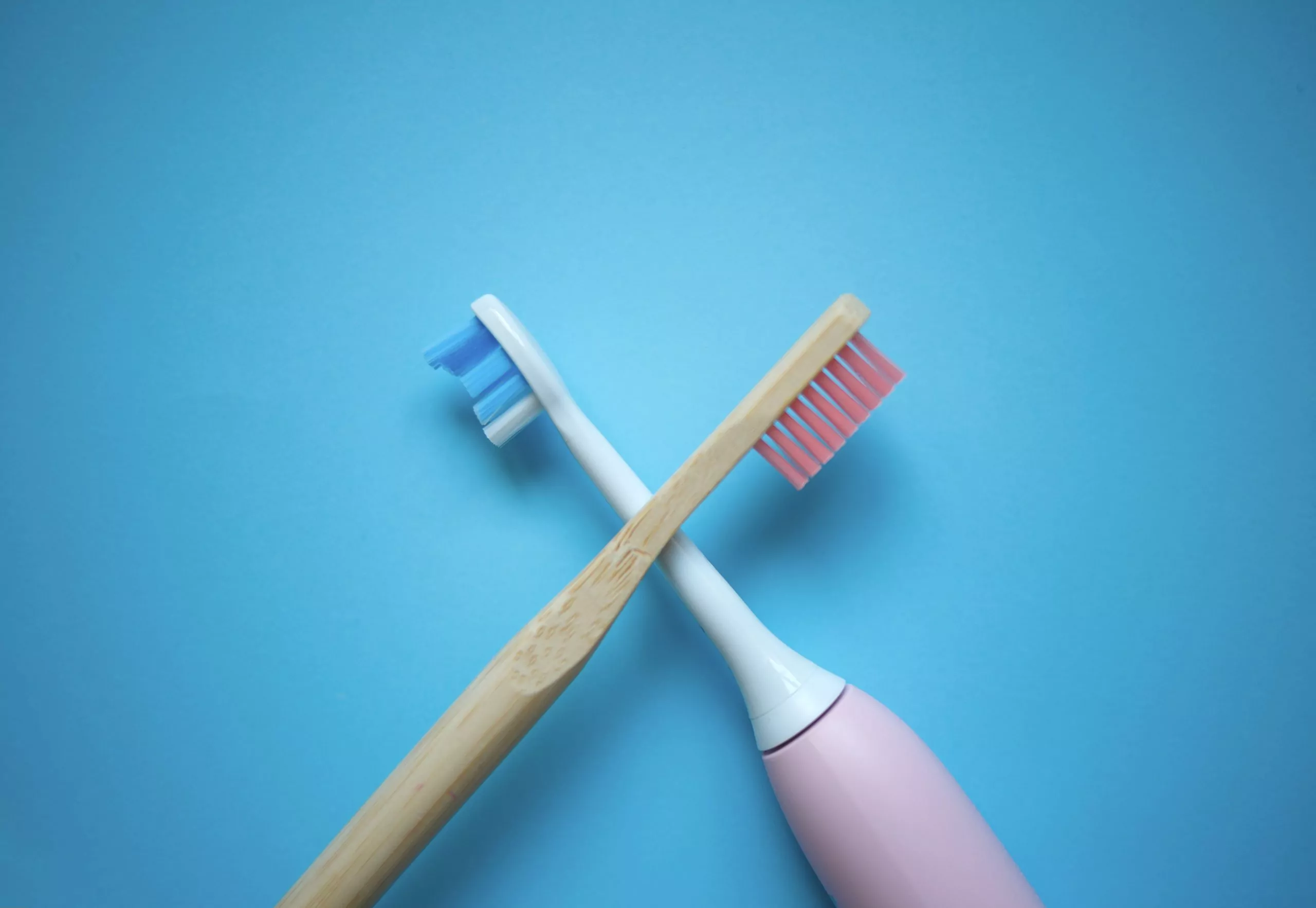Introduction
A healthy smile is a beautiful smile, but what happens when black spots begin to tarnish that sparkle of your smile? Sometimes, the black spots on teeth can be more than just a cosmetic concern.
They can indicate underlying dental issues that, if left untreated, could lead to serious health problems. Indeed, dental health is intimately connected with overall systemic health.
Black spots on teeth could be a sign of tooth decay, a common disease that can lead to more severe conditions such as periodontal disease. Periodontal disease has been linked to other serious health problems, such as heart disease and diabetes.
The good news is with early diagnosis and proper dental care, these marks can be effectively treated and even prevented.
Causes of Black Spots on Teeth
Tooth Decay
Tooth decay is the most common cause of black spots on teeth. The spots are typically dark brown or black, depending on the severity of the caries process. They can be present at any location of the tooth.
Teeth decay occurs when bacteria in the mouth metabolize sugars, producing acids that erode the protective enamel layer of the teeth. The continual exposure to these acids leads to demineralization, weakening the enamel and creating an environment for bacteria to thrive in dental plaque.
Bacterial by-products, along with debris from the breakdown of tooth structure, contribute to the dark appearance. The black colour often indicates a more advanced stage of decay. The darker dentine inside the tooth may be visible.
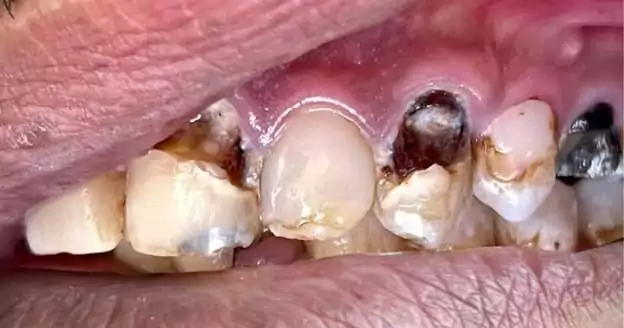
Signs and symptoms usually present with black spots of tooth decay are:
● Continuous discomfort or toothache
● Sensitivity to sweet meals and beverages
● The sensitivity to extremes of temperatures
● Discomfort when chewing
● A little cavity or pits in your teeth
Dental Trauma
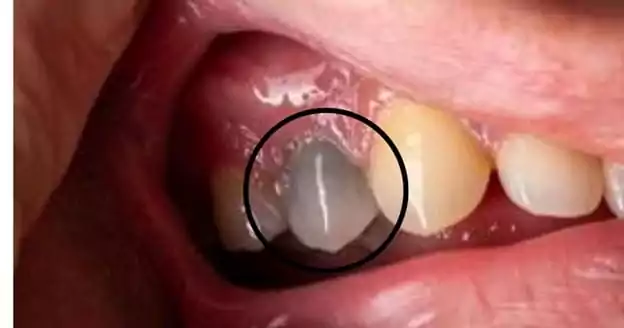
Injuries to the teeth, such as falls, accidents, or bruising, can cause internal bleeding or damage to the tooth structure.
Over time, this trauma may manifest as black spots due to blood cells. The tooth may turn grey or black if the damage is severe enough.
Traumatic injuries can also cause fractures in the enamel, making it easier for plaque and bacteria to accumulate and create dark spots.
Poor Oral Hygiene
Another common cause of black spots is poor oral hygiene. Saliva contains minerals that can deposit as tartar or dental calculus, a hard deposit that can accumulate around your gums.
Inadequate brushing and flossing can allow plaque and bacteria to thrive.
When plaque and tartar aren’t consistently removed, they can harden and darken in colour, leading to noticeable black spots.
Tobacco Use
Smoking or chewing tobacco can cause stains on your teeth due to the nicotine and tar in the products. These stains can be brown, yellow, or even black.
However, The plaque on teeth is highly susceptible to absorbing pigments, food colours, and other substances we ingest, which is caused by smoking and eating colourful foods. So, Teeth stains are more common amongst smokers and consumers of highly coloured foods
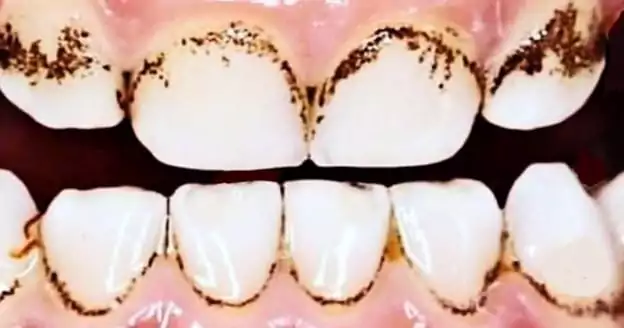
Food and Drinks
The consumption of certain foods and drinks can contribute to forming black spots on teeth. Also, it begins as surface staining, leading to more discoloration with time.
Some Food and Drink culprits include:
● Coffee and tea: The high concentration of tannins in these beverages can lead to dark stains on teeth.
● Dark fruits and berries: Foods such as blueberries, blackberries, and pomegranates contain natural pigments that can leave dark marks on teeth.
● Red wine and dark sodas: The deep colors in these drinks can stain teeth if consumed frequently.
● Soy sauce and balsamic vinegar: These popular condiments contain dark pigments that can easily stain teeth.
● Cola and Dark Soda: Acidic and dark-colored sodas contain staining pigments and acids that can contribute to enamel erosion and discoloration.
● Beets: Beets, with their intense color, can contribute to staining on teeth, leading to the development of black spots.
● Curry: The vibrant and intensely pigmented spices in curry, especially turmeric, can stain teeth when consumed regularly.
● Chocolate: Dark chocolates and those with added colorants may contribute to tooth discoloration if consumed excessively.
● Iron Supplements: Some iron supplements, if not taken correctly or with proper dental care, can cause black spots on teeth
Consuming these items frequently can lead to black spots over time.
Certain Medications
Some medications, particularly antibiotics like tetracycline and doxycycline, can cause tooth discoloration if given at a young age while the teeth are still developing.
Antihistamines like Benadryl, antipsychotic drugs, and drugs for high blood pressure can also cause black spots.
Always consult your doctor and dentist if you notice any changes in the color of your teeth after starting a new medication.
Aging
Our teeth’ outer enamel layer wears away as we age, revealing the darker dentin beneath. This can give the teeth a yellow, brown, or black appearance.
The process of arresting caries is also one of the reasons for black-brown spots left behind on a tooth. In older people, black spots are frequently present near the cervical areas of the tooth near the gumline.
In addition to age-related wear and tear, years of exposure to staining foods, drinks, and possibly tobacco can accumulate, leading to darker spots on the teeth.
Dental Fillings
Amalgam fillings, commonly known as silver fillings, can sometimes leach into the surrounding tooth structure, causing a grey or black discoloration. This is completely harmless but can be aesthetically unappealing.
If you’re concerned about the appearance of your fillings, talk to your dentist about composite resin fillings, which can match the colour and shade of your teeth.

Fluorosis
Fluorosis is a cosmetic condition that affects the teeth. It’s caused by overexposure to fluoride during the first eight years of life.
This is the time when most permanent teeth are being formed. Fluorosis can lead to faint white streaks, spots, or more noticeable, harmless, brown or black discolouration.
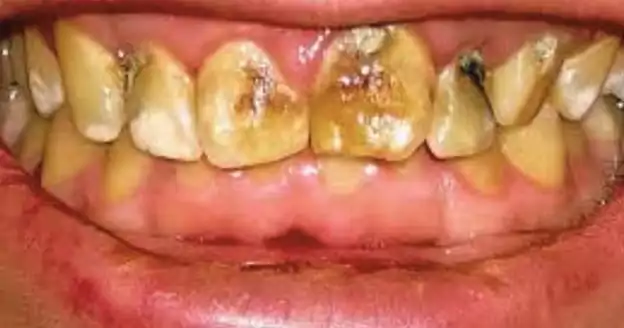
Medical Condition
Celiac disease, an autoimmune disorder triggered by the ingestion of gluten, can affect oral health, potentially leading to the development of black spots on teeth.
In individuals with celiac disease, malabsorption of nutrients may occur, impacting the proper formation of tooth enamel.
As a result, dental enamel defects may show as black or brown spots.
Health Risks of Black Spots on Teeth
While black spots on teeth are not always harmful, they can indicate underlying issues that require attention.
Tooth Decay
If black spots result from tooth decay, it can result in pain, sensitivity, and even tooth loss if not treated promptly.
Gum Disease
Gum disease often begins with plaque build-up – the same condition that can cause black spots.
Gum disease can lead to red, swollen gums and tooth loss if left untreated. The gum disease can progress to a severe condition known as periodontitis involving bone loss.
This infection of the gums can result in swollen, sensitive, or even receding gums if left untreated.
Oral Cancer
Although rare, oral cancer can present as black spots on teeth. If you have persistent black spots that don’t improve with brushing or dental treatment.
Bad Breath
Black spots caused by tooth decay can lead to persistent bad breath due to the bacteria in the decayed areas.
Detecting Black Spots on Teeth
Black spots can be detected through a visual inspection or a dental examination. If you notice any changes in the color or appearance of your teeth, it’s important to schedule a dental appointment.
Why Black Spots Should Concern You
● Black spots can impact more than just your appearance.
● They can affect your confidence, especially when smiling or speaking.
● Additionally, they can indicate potential oral health complications that can lead to serious health problems if left untreated.
Getting Rid of Black Spots at Home
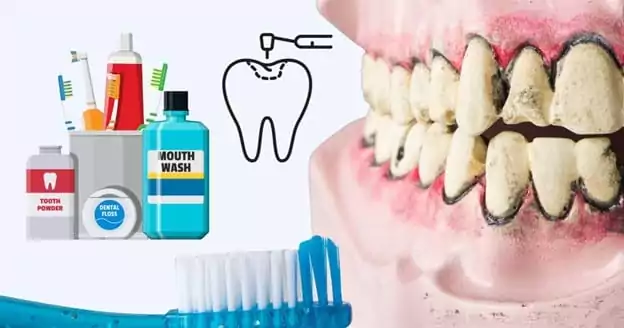
While professional treatment is often necessary, there are some steps you can take at home to help reduce black spots:
Proper Brushing and Flossing
● Regular brushing and flossing can help remove plaque before it hardens into tartar.
● Ensure you use the proper brushing and flossing technique, as aggressive brushing can cause more harm than good.
Natural Remedies and Home Care Tips
● Some natural remedies, such as baking soda or activated charcoal, can help lighten black spots.
● Using lemon by squeezing on your teeth
● Using the salt water rinses.
NOTE:– However, using these methods sparingly is important as they can also wear down your enamel over time.
Limiting Black Spots on Teeth
You can limit the formation of black spots by moderating your intake of staining substances, maintaining good oral hygiene habits, and visiting your dentist regularly for check-ups and cleanings.
Treatment Options
The dentist provides various treatment options depending on the root cause of the black spots.
Dental Cleaning and Scaling
● Professional dental cleaning procedures can remove hardened plaque (tartar) and surface stains.
● Dental prophylaxis and polishing with abrasives
Cosmetic Teeth Whitening
● If black spots are primarily due to stains, professional teeth whitening can improve the appearance of your teeth and make your smile white and bright.
● Over-the-counter teeth whitening strips can be used if the cause of staining is not decay.
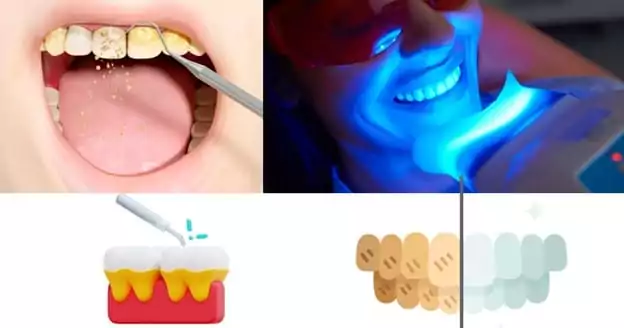
Dental Fillings or Restorations
● For black spots caused by decay, a filling or other dental restoration may be necessary.
● Tooth-colored composite resin filling is recommended and widely used.
Veneers
● Veneers are thin shells that cover the front of your teeth, improving their appearance.
● The veneer can match the color and shade of your surrounding teeth for a natural-looking smile.
Root Canal Treatment
● In extreme cases where decay has reached the root of a tooth, root canal treatment may be necessary. This involves removing infected tissue from the inside.
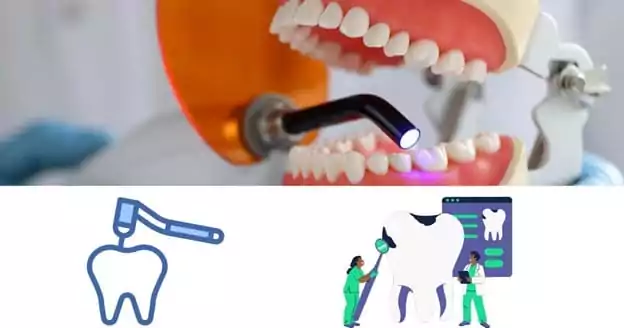
Prevention Tip
Preventing black spots involves regular dental check-ups, healthy dietary choices, and avoiding tobacco and excessive alcohol consumption. A balanced diet of fruits, vegetables, and dairy can help keep your teeth healthy.
Relation of Pain and Black Spots on Teeth
When black spots on the teeth are accompanied by pain, it can suggest advanced tooth decay. This is a dental emergency, and immediate professional care is necessary.
Case Studies
Several case studies from the American Dental Association and European Dental Associations emphasize the importance of timely intervention for black spots on teeth.
Neglected spots often lead to advanced stages of tooth decay, requiring complex procedures like root canal treatment or even tooth extraction.
Final Verdict
The appearance of black spots on your teeth should not be ignored. While certain home care practices can help minimize their appearance, professional dental intervention is often necessary to thoroughly remove these spots and address any underlying issues.
If you are noticing black spots on your teeth, don’t delay. Schedule a dental appointment for a proper evaluation and treatment.
Remember, early intervention is critical to maintaining a healthy, beautiful smile. Take care of your oral hygiene regularly!





